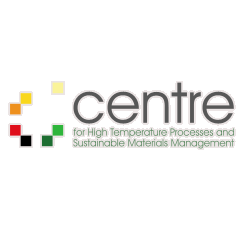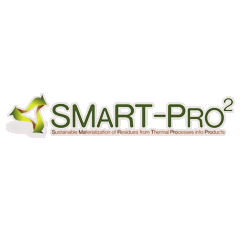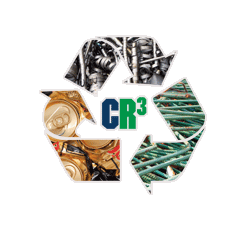Posters
Click on the title to download a pdf of the poster.
A field study using steel industry slags in a landfill cover construction
L. Andreas, S. Diener, A. Lagerkvist
Different mixtures of EAF and ladle slag from Uddeholms AB at Hagfors, Sweden, were investigated in the lab and in a full scale field test of a landfill top cover, with regard to physical and chemical properties (compaction, permeability, leaching behaviour, mineralogy). The results point at beneficial properties for the use in both drainage and liner layers and at a very low leachability.
Slag practice optimisation for valorisation
S. Arnout, E. Nagels
In a metallurgical or any other high temperature process, several aspects influence the chosen slag practice. Enabling slag reuse and valorisation is an important aspect to consider as well. In some cases, the demands are conflicting with process requirements. Then, hot stage slag engineering is still possible. However, in many cases, process and reuse requirements can go hand in hand.
The Centre for Resource Recovery and Recycling (CR³)
B. Blanpain, T. Van Gerven, K. Van Acker, P.T. Jones, B. Mishra, D. Apelian
The Centre for Resource Recovery and Recycling, initiated by two outstanding engineering schools of the USA, WPI (Worcester Polytechnic Institute) and CSM (Colorado School of Mines), is since the beginning of 2010 an official Industry University Cooperative Research Centre (I/U CRC). The vision of CR3 is: "To be the premiere industry-university alliance serving consortium members' needs, by establishing the needed knowledge base, and by educating future leaders of the industry in the research area of resource recovery and recycling. We are dedicated to the Sustainable Stewardship of our Earth's Resources". The approach is to engage in the development of technologies and their transfer to industry with the goal of achieving materials sustainability. Resource productivity and societal sustainability demand that materials recovery and recycling be included from initial product design through manufacture to end-of-life disposition in a manner that yields both energy savings and profitability. The Industry/University Cooperative Research Center (I/U CRC) program of the NSF is a system to support and organise precompetitive research between industries and universities. Such a centre comprises a set of academic partners that are engaged to perform research in collaboration with industries. The companies become member of the Industrial Advisory Board for an annual fee. The membership of a company runs via one of the universities and the annual fee is used to finance the research activities of that university. Each company gets access to all projects within the Centre. The NSF (I/U CRC) program is very successful. At the moment, there are 56 centres active in a variety of disciplines. More information on the Industry/University Cooperative Research Centre programme is available at http://www.nsf.gov/eng/iip/iucrc . Recently the K.U.Leuven was officially approved as a European member to the CR3. More information is available on http://www.wpi.edu/academics/Research/CR3/
Removal of As, Cd, Zn and Pb from aqueous solution by zeolite-like materials synthesised from MSWI Residues
Y. W. Chiang, B. Meesschaert, J. Martens
High concentrations of heavy metals are present in many industrial wastewater streams, tailing ponds, contaminated groundwater, etc. The levels are often toxic to the human body and have an adverse effect on the ecosystem. Removal of these harmful substances from the water streams before they are discharged into the environment is essential. Methods such as precipitation, ion-exchange, membrane technology and adsorption have been employed to reduce the level of heavy metals. However, the economical competitiveness and user friendliness of these methods are important factors to stimulate industry to apply the technology. Therefore, development of low cost adsorbents that are capable of removing multi-contaminants is of interest. Municipal solid waste incineration (MSWI) residues contain oxides of silicon and aluminium, and have an intrinsic basicity. They are suitable for the synthesis of zeolitic substances that could be used as sorbents. The objective is to use a Waste-to-Product valorisation concept to minimise the production and disposal costs. Synthetic zeolites have large specific surface area, high adsorption capacity and good cation exchange capability that help to reduce heavy metal concentration in aqueous media. This study investigates the zeolite-like materials synthesised from MSWI residues by a hydrothermal method. The sorbents synthesised are tested for sorption performance of aqueous species of contaminants (As, Cd, Zn, and Pb). To maximise the utilisation of the incineration process residues, the adsorption capacity of sorbent material synthesised using intrinsic waste residue alkalinity will be compared with sorbent material synthesised using a conventional hydrothermal method.
Economic drivers and non-technical barriers for the valorisation of ashes and slags
Maarten Dubois
In a perfect world, competitive markets would deliver an efficient and welfare optimal equilibrium. In reality however, markets are not perfectly competitive. Environmental damages are not reflected in market prices, there is a tendency to underinvest in Research and Development when benefits cannot be appropriated sufficiently, and new products face all kinds of entry barriers when introduced in the market. Therefore, government intervention is often justified. But how should governments intervene in markets? What is the optimal trade-off between efficiency of markets and the benefits from government corrections? Economic literature proposes policy instruments to deal with market shortcomings but in the real world these instruments are often only partially implemented. How can we optimise these policy instruments is the major research aim of this project.
Mineral characterisation of stainless steel EAF and AOD slags
S. Huang, D. Geysen, P.T. Jones, M. Guo, B. Blanpain, P. Wollants
Mineralogical properties of stainless steel EAF and AOD slags were investigated using XRD and SEM in the framework of slag stability. The samples were collected from the deslagging process and the cooled slag yard. Both the hot and room temperature EAF slags consist mainly of merwinite, akerminite and spinel. Significant mineralogical differences exist between the hot slag and the cooled slag after boron treatment and cooling. The major minerals of the hot AOD slag (austenitic steel) are r-Ca2SiO4, merwinite, bredigite and cuspidine, while the room temperature slags contain merwinite, bredigite and cuspidine.
Isothermal crystallisation in slags: in-situ experiments and computer simulations
J. Heulens, B. Blanpain, N. Moelans
To enhance the fundamental knowledge of slag crystallisation, this research focuses on the computer simulation and in-situ observation of crystallising minerals in oxide melts. We used a confocal laser microscope (CLSM) to observe isothermal crystallisation of minerals. The phase field simulation technique uses a vast number of physical input data, such as Gibbs energies of the phases (FactSage), diffusion coefficients of the components (literature) and the interfacial energy of the solid-liquid interface (unknown). By comparing experimental values for the mineral growth velocity with simulated values, the influence of surface energy on the crystallisation behaviour can be assessed.
Electric arc furnace steel slag as a raw material towards the production of "green" cements
R. I. Iacobescu, D. Koumpouri, R. Saban, Y. Pontikes, G. Angelopoulos
Worldwide, high quantities of electric arc furnace steel slag (EAFS) resulting from steel or iron production are dumped. Another challenge that the global cement industries face today, is the need to reduce CO2 emissions from the manufacturing process. Considering these problems, two types of "green" cements, a belite and a sulfo-alumino-ferrite belite one, respectively, were produced, using 10 wt% EAFS as a raw material. Raw materials were characterised by XRF and XRD, whereas clinkers were analysed by XRD and SEM. The finesse of particles was determined by EN 196-6, setting time and soundness by EN 196-3 and compressive strength according to EN 196-1. Hydrated phases were examined by TG and SEM. Fast initial setting time occurs for both cements. High early compressive strength was found for the BSAF cement type, in contrast to the belite type.
Centre for High Temperature Processes and Sustainable Materials Management
P.T. Jones, D. Geysen, M. Guo, Y. Pontikes, L. Pandelaers, S. Huang, V. Petkov, J. Van Dyck, B. Blanpain, K. Van Acker, P. Wollants
This University of Leuven research Centre consists of a co-operation between the research group 'High Temperature Processes and Industrial Ecology' (dep. MTM) and leading materials and recycling companies, including ArcelorMittal, Umicore and Group Machiels. The mission statement is to enhance the ecological and economical sustainability of high-temperature processes, using an interdisciplinary and holistic research approach, targeting (mainly) competitive projects, which are problem driven and science-deep. The Centre has five competences domains (refractories and freeze lining, high-temperature modelling, high-temperature experiments, industrial ecology and microstructural characterisation) that are applied in three application domains (ferrous and non-ferrous industries, building materials). For the competence domain "Industrial Ecology" the Centre interacts in a highly intensive way with the K.U.Leuven based "Centre for Resource Recovery and Recycling" (CR3) and the SMaRT-Pro² K.U.Leuven Knowledge Platform, who both focus more on pre-competitive projects. The Centre was also one of the main drivers behind the Flemish Research Consortium on Enhanced Landfill Mining (ELFM). Through the partnership with a highly networked academic group, Centre partners are continuously exposed to new ideas, bright students and researchers. The Centre allows access to state-of-the-art modeling software, and experimental and characterisation equipment (e.g. a new JEOL FEG JXA 8500-F EPMA-WDS system), providing a higher base level of relevant expertise. It mainly acts as a flywheel for larger industrial projects, that may be government sponsored. The Centre is open for new members.
Process for enhanced mineralisation
P. Knops, K. Rijnsburger
Innovation Concepts is developing a new process for the enhancement of the reaction kinetics. The main uses are foreseen for the acceleration of the slow mineralisation reaction. This process consists of a specially developed Gravity Pressure Vessel. Basically this is a gravity fed plug flow reactor, with an integrated heat exchanger. A further consequence of this design is the continuous removal of a formed passivating layer. The process conditions at the bottom (high pressure and high temperature) promote the fast reaction. With this reactor the relatively low reaction enthalpy is sufficient to "drive" the process.
Mechanochemical activation of stainless steel slags
L. Kriskova, Y. Pontikes, Ö. Cizer, G. Mertens, W. Veulemans, D. Geysen, P.T. Jones, L. Vandewalle, K. Van Balen, B. Blanpain
In this work the effect of mechanochemical activation on the hydraulic properties of stainless steel slags was studied. Two types of self-pulverised slag, from ladle metallurgy (LM) and argon oxygen decarburisation (AOD), were investigated. As they both consist mainly of γ-dicalcium silicate and merwinite, these slags exhibit only negligible hydraulic reactivity and do not find any application at present. Following milling in a bead mill for 6 h, resulting in 50 wt% of particles being smaller than 1 µm, the slags presented an increase of amorphous phase between 30% and 40%, approximately. After mixing with water, exothermic reactions were detected approximately after 17 h, in case of LM, and 25 h, in case of AOD slag. Thermogravimetric and differential scanning calorimetry reveal weight loss and an endothermic reaction below 200°C indicating the presence of hydration gel product. XRD results indicate that the amount of the crystalline phases, in particular periclase, merwinite, γ-C2S and bredigite, decreases with hydration time. The morphology of the hydrated product consists of fibres which grow and connect to create more compact sheet features after 28 days of hydration.
Geopolymer formulations from high temperature residues deriving from urban waste treatments
I. Lancellotti, E. Kamseu, L. Barbieri, C. Leonelli
Municipal solid waste incinerators produce tons of fine grain size fly ashes which contain large amounts of toxic substances, in particular volatile heavy metals. These residues have been successfully subjected to the stabilisation/solidification (S/S) technology known as geopolymerisation. The chemical stability of geopolymers with Si/Al molar ratio of 1.8-1.9 and Na/Al molar ratio of 1.0, synthesised by alkali activation of metakaolin and the addition of 20 and 40 wt% of toxic fly ashes, is presented. Tested for leachability (according to EN 12457 regulation) the proposed materials fall within limit values set by regulation for non-dangerous waste landfill disposal.
Tapojärvi Oy: Green company - Waste to valuable products
H. Launonen
Tapojärvi does very effective stainless steel slag and ferrochrome slag handling at the Outokumpu steel factory in Tornio, Finland. The biggest benefits of the processes are that ferrochrome and stainless steel are separated with a high metal recovery rate. Even burnt lime is separated from the stainless steel slag to be reused in the stainless steel production process. The rest of the slag becomes CE-marked aggregates in various size fractions. Thanks to our process there is no disposable waste left to burden the nature. Tapojärvi has also a recycling unit for making refractory cross and mass. This unit does crossing, sorting and separating of used bricks from ladles at a steel plant, and it is very effective in manufacturing insulation used in ladles. This unit produces factory by-products and doesn't leave any disposable waste. Tapojärvi Oy was established in 1955 in Finnish Lapland. The company has over 200 employees. Tapojärvi works as a solid part of the production processes at Outokumpu since 1985 and at Ruukki since 1973. Besides slag handling and other factory services, we also work in various mines.
pH-dependence of leaching characteristics of water and air cooled slag
M. Loncnar, M. Zupančič, P. Bukovec
Slag properties can be enhanced by controlling and improving the process during slag handling in the liquid state. However, stainless steel slags are often enriched in potential toxic metals, which can be released in the environment through ageing processes and leaching. In our experiments, the leaching behaviour of metals from EAF stainless steel slags was investigated. Experimental data was obtained from a pH-dependence leaching test (ANC). The effect of slag handling in the liquid state has also been investigated. The ANC test was performed on air and water cooled slags before and after exposure to a synthetic leaching solution, representing acid rain.
Sustainable Materialisation of Residues from Thermal Process into Construction Materials
M. Salman, O. Cizer, K. Van Balen, B. Blanpain, L. Vandewalle
Carbon dioxide and solid wastes (slags) are the two most important residues generated in high thermal processes like steelmaking. Most of the solid residues are either used for low value applications, like aggregates, or landfilled. These residues seem to have potential for higher value applications due to their inherent composition. The aim of the research is to valorise these residues into construction materials.
Valorisation of thermal residues by intensified mineral carbonation
R. Santos, T. Van Gerven
Mineral carbonation involves the capture of carbon dioxide in a mineral form. The principal aim and advantage of this approach is the chemical stability (reduced free lime and improved leaching resistance) and storage safety of mineral carbonates, the opportunities for process integration presented by the technology, and the potential for valorisation of otherwise low-value resources (virgin or waste) into useful products. A class of waste materials that has good potential for implementation as a feed material for mineral carbonation are steel slags. An integrated on-site mineral carbonation approach is envisaged as a possibly economically favourable solution in this work.
Sustainable Materialisation of Residues from Thermal Processes into Products (SMaRT-Pro² Knowledge Platform)
T. Van Gerven, Y. W. Chiang, R. Santos, M. Salman, M. Dubois
Sustainable use of solid residues and carbon dioxide, the two largest and most important waste products from thermal processes, is an urgent issue both for the industry involved and society as a whole, considering the financial and environmental repercussions of their production. The Industrial Knowledge Platform on Sustainable Materialisation of Residues from Thermal Processes into Products (SMaRT-Pro²) brings together academia, industry, investment funds, civil society and authorities on the issue of recycling of high temperature residues and the like. It aims at 1) networking with the relevant actors, 2) performing research in order to achieve application-oriented advances, and 3) establishing a Flemish knowledge hub for opportunities in international collaboration. This Knowledge Platform focuses on three types of waste-to-product valorisation: production of a carbon sink, construction materials, and sorbents.
Sustainable material recovery from EU-Landfills
W.J. van Vossen, D. Zegers
The ultimate ambition is a world without waste, which is the ideal situation according to the principle of Cradle to Cradle®. However it takes some time before this will become reality. In the meantime a transition process is currently going on from the traditional waste management (recycling, incineration, landfilling) to Sustainable Materials Management. Or in other words: a shift in awareness from reducing the negative impact of waste management to the added value of the positive impact of resource recovery and chain management. During this transition process and taking into account the approaching scarcity of raw materials and precious metals, we should try to manage our waste as sustainable as possible. From that perspective it also can be justified to examine the added value of recycling our 'historical' waste, which has been landfilled all over Europe in the last 50 years. Europe counts over 150000 landfills, which represent an estimated total volume of 30 to 50 billion m3 of waste. This huge quantity of waste also represents a huge potential of materials to be recovered and recycled (MFL = Materials From Landfills ) and/or of energy from additional biogas (methane and carbon dioxide) to be recovered using the concept of sustainable landfill management (SLM). Of course a profitable exploitation of resource recovery and/or energy recovery from landfills depends on a lot of factors such as the spatial distribution of the landfills, the specific local circumstances such as tax regime, supply and demand of raw materials, the market prices of raw materials and precious metals. This varies per EU-country. Nevertheless, in times of climate change and an approaching shortage of raw materials and precious metals, it is an opportunity to deal with our existing landfills in an environment-friendly way, fitting in the framework of resource recovery and chain management. The objectives are:
" To create awareness of and to call your attention to the huge potential of raw materials to be recovered and recycled from 'historical waste' in the European Union;
" To call upon the willingness of stakeholders to support this initiative and to participate and invest in a step-by-step examination of the feasibility and viability of this business case.
Fayalite based slags: metal recovery and utilisation
X. Wang, D. Geysen, S.V. Padilla T., N. D'Hoker, S. Huang, P.T. Jones, T. Van Gerven, B. Blanpain
Fayalite based slag has already been used for a long time in copper metallurgy. The production of copper from both ores and secondary resources results in major amounts of fayalite slag at a rate of 2.2 ton slag per tonne of produced copper. Fayalite slag still contains valuable metals in concentrations sometimes exceeding the content of current natural ores. Rather than being a waste, the slag residue itself can be used in different applications. In order to utilise fayalite based slag and improve the sustainability of the copper metallurgical process, new extraction techniques and slag applications need to be implemented or developed. Although fayalite is the main phase, the resulting microstructure and metals content of the slag slightly differs depending on the metallurgical process and the cooling practice. Applicable techniques for metal recovery and slag utilisation depend on the final microstructure of the slag. This work reviews existing and novel routes for metal recovery and fayalite slag utilisation. Firstly, an estimate of the amounts of old and currently produced fayalite slags together with differences in microstructure is given. Secondly, existing and novel techniques to recover metals from fayalite slag are discussed. Thirdly, the utilisation of fayalite slag in for example construction applications is described in relation to leaching of metals. Future prospects for fayalite slag research are indicated for recovery of the remaining metals and utilisation of the slag or residues subsequent to metal recovery.
Chemical and mechanical activation of gamma dicalcium silicate
F. Zhang, Y. Pontikes, L. Kriskova, D. Geysen, P. T. Jones, B. Blanpain
Dicalcium silicate (2CaO.SiO2 or C2S in shorthand) constitutes a significant fraction of ladle metallurgy (stainless steel) slags, and unless stabilised into the beta polymorph (β-C2S), the thermodynamically stable gamma dicalcium silicate (γ-C2S) will form during cooling. Formation of γ-C2S, however, is accompanied with the physical disintegration of slag into a fine powder and, moreover, γ-C2S does not hydrate in the presence of water. In order to investigate the cement making potential of C2S rich slags, this work investigates methods to enhance the hydraulic reactivity of pure γ-C2S by the addition of chemical activators, such as solutions of NaOH, Na2CO3 and sodium silicate, or by prolonged milling in a bead mill. The hydration reactions were followed by isothermal calorimetry, XRD and DSC/TGA analysis. Results demonstrate that both Na2CO3 and milling to d90 < 10 µm are effective.




